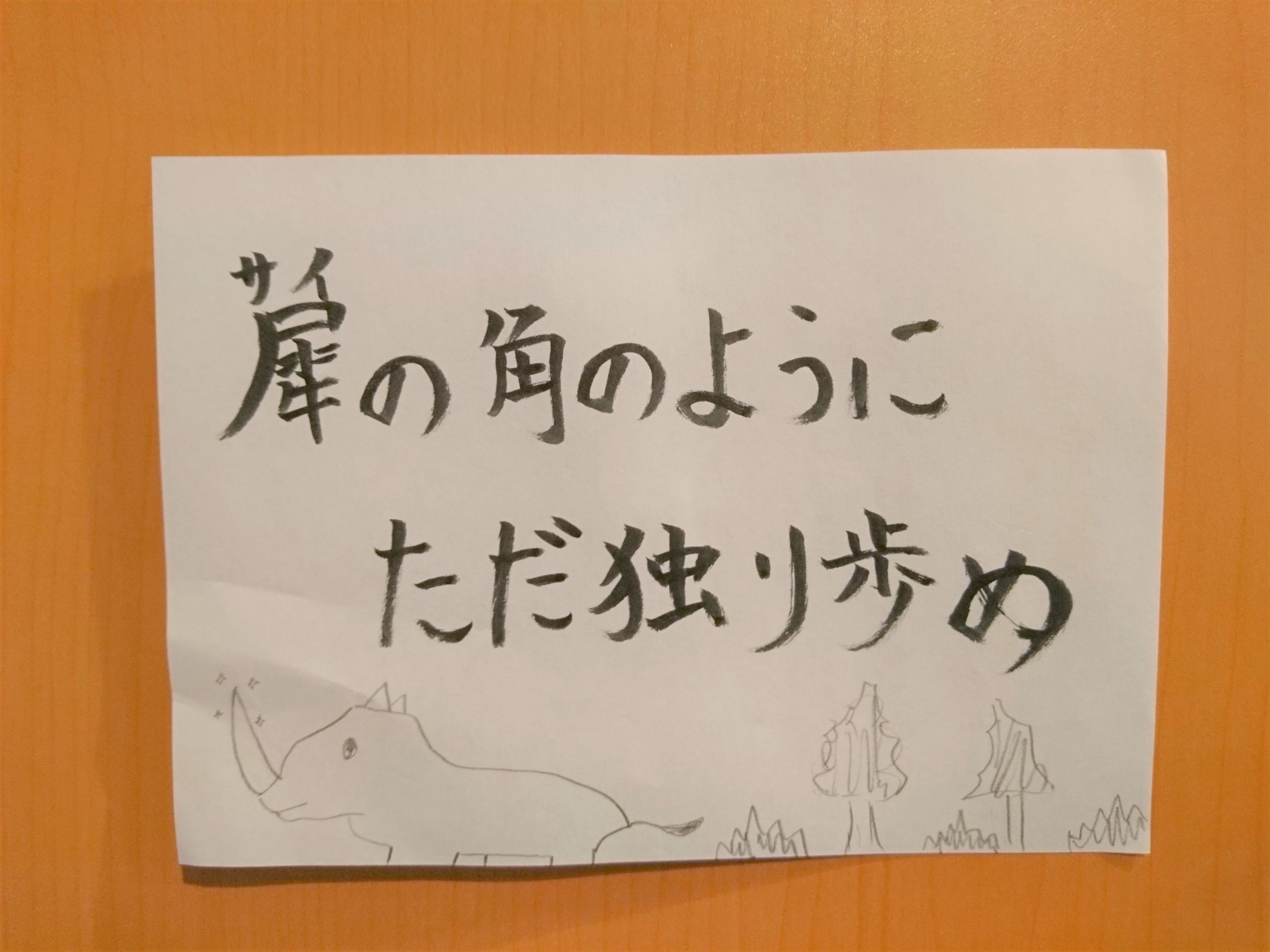Walk alone like a rhinoceros horn.
68. Strive to achieve the highest purpose, be not timid in mind, be not slothful in deed, be firm in action, be equipped with physical strength and wisdom, and walk alone like a rhinoceros horn.
71. Walk alone like a lion not startled by sound, like the wind not caught in a net, like a lotus not polluted by water, like the horn of a rhinoceros.
Hajime Nakamura's translation of Buddha's Words, "I. The Serpent Chapter, 3. Rhinoceros horns, p21, 22"
The last time we read a verse, it was a paradoxical question that made us pause, as if the Buddha was in his element.
After all, the Buddha's words are not straightforward.
This time, however, you will be confronted with one of the highlights of this sutra.
Let's go with me and reset our heads that have been bothered by the previous poem.
Now, the above two verses. This is the famous"Walk alone like a rhinoceros horn."This is the original verse of the phrase
The "Rhinoceros Horn Section," which contains these two verses, contains a total of 40 verses, each one of which is"Walk alone like a rhinoceros horn."The article concludes with the statement.
In this issue, we have excerpted two of the most memorable verses.
"Walk alone like a rhinoceros horn."
...Oh no, what a simple analogy.
If you are trying to accomplish something, there are times when you must immerse yourself in silence and alone.
However, it is not easy to keep working toward a goal alone and silently.
This is especially difficult in a culture such as Japan, which places great value on group harmony.
Interestingly, the Buddha also said this shortly before this verse.
40 "If you are in the company of others, you will always be called upon by others to rest, to stand, to go, to travel, and so on. Walk alone like the horns of a rhinoceros, aiming for independence and freedom, not being subordinate to others.
Hajime Nakamura's translation of Buddha's Words, "I. The Serpent Chapter, 3. Rhinoceros horn, p18"
Of course, it is important to study together with good friends, the Buddha said elsewhere.
However, when it must be done, the Buddha says, be prepared to go through it alone.
And the next verse. This is one of my favorite parables of all time. I introduced it first, but let's read it again.
71. Walk alone like a lion not startled by sound, like the wind not caught in a net, like a lotus not polluted by water, like the horn of a rhinoceros.
An imposing lion unperturbed by the noise around him.
It is wonderful to see a lion, the king of a hundred beasts, appear in a rhinoceros verse. It reminds me of Ngorongoro in Africa. Rhinoceroses could also be seen here, although I was not able to photograph them.

Although lions and rhinos are often associated with Africa, lions and rhinos used to live in India as well. (* Unfortunately, the lion is extinct, but the rhino still lives today.)
That is why rhinoceroses and lions appear in the words of the Buddha living in India.
And the next parable, "the wind that cannot be caught in a net".
This is my favorite.
Wind has no form.
No matter what shape of net you prepare, no matter how fine the mesh you bring out, the oncoming wind will easily slip through.
The way he easily brushes aside any attempts to capture him and moves onward with ease is graceful, aloof, and strong.
The imposing strength of a lion, and the soft wind that stands freely in the air.
I feel that the reason why the Buddha is the Buddha is that these two things are said in succession.
And finally, lotus flowers.
The lotus blooms out of the mud. Mud implies human vexation and the filth of the world.
The verse suggests that it is from within us, living in the midst of our troubles, that beautiful lotus flowers bloom.
Strength like a lion and suppleness like the wind. They bloom from within us like lotus flowers, the Buddha says.
Ah, what a clever analogy!
It is said that Buddha lived approximately 2,500 years ago.
Even after 2,500 years, the brilliance of his words has not diminished at all.
That is why the phrase "walk alone like a rhinoceros horn" has such a strong impact on those of us living today.
Today, I have read the highlight of this sutra, the rhinoceros horn verse.
This sutra is said to be the closest to the preaching of the Buddha when he was alive, and it seems to me that the atmosphere of this sutra can be felt most in the rhinoceros horn verses.
We can see such an image of Buddha teaching and guiding people through skillful parables.
Well, that's all for today.
Thank you for staying with us today until the end.
Click here to read the next article.
Related Articles





































